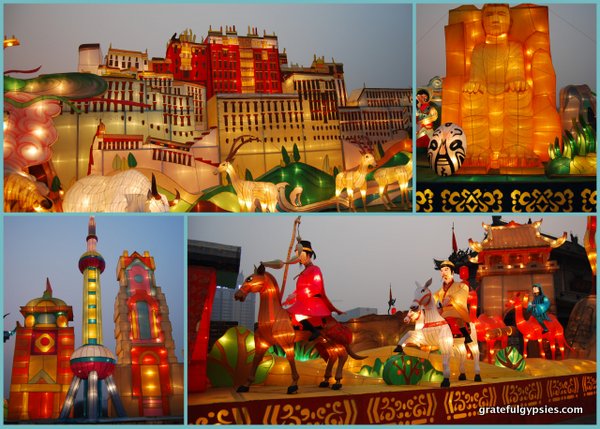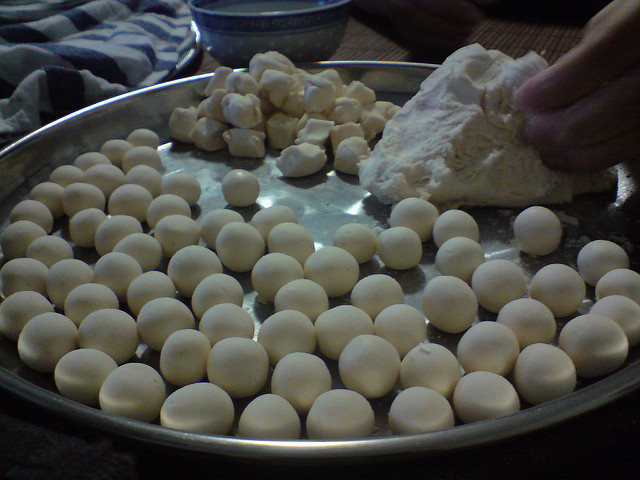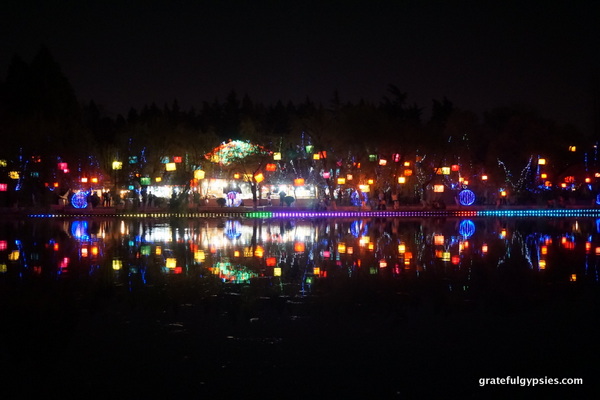A Guide to the Chinese Lantern Festival Posted by sasha on Feb 19, 2019 in Culture
Today marks the fifteenth and final day of the Spring Festival. Known as the Lantern Festival (元宵节 – yuán xiāo jié), the Chinese name can be broken down as such – the character 元 refers to the first lunar month, and 宵 means “night.” A full moon shines brightly on this night, but that’s not the only light you’ll see up in the sky – red lanterns and numerous fireworks also illuminate the night sky. Let’s learn a little bit more about the history and traditions associated with this Chinese holiday:
History
As is true with most Chinese festivals, there are many legends as to how this holiday developed. One such tale states that the first emperor of China, Qinshihuang (秦始皇 – qín shǐ huáng), ordered elaborate ceremonies to honor Taiyi (太乙 – tài yǐ), the God of the Heavens. The idea behind the ceremonies was that Taiyi would bring good health and good weather to the people. Later on in the Han Dynasty, the emperor Wudi (汉武帝 – hàn wǔ dì) made it an official holiday. However this holiday came to be, it is still an integral part of Chinese culture thousands of years later.
Learn a bit about the customs of the festival in this video from “Hello China.”
Lanterns
Back in the Han Dynasty, Buddhism (佛教 – fó jiào) became very popular in China. In order to show respect for Buddha, the emperor ordered lanterns to be lit in the palace. During later dynasties, this custom became commonplace amongst all people. These days, you can see lanterns of all shapes and sizes hanging in homes, businesses, and parks all around China.
One thing that most lanterns have in common is the color, as red represents good fortune. One interesting custom associated with these is the practice of solving lantern riddles (猜灯谜 – cāi dēng mí). Here is an example of one such riddle:
Riddle: What building has the most stories?
Tip: Thing
Answer: Library
For some more lantern riddles, check out this hilarious video from the kids at Wujia National Primary School in Tainan, Taiwan:
Yuanxiao
A special food is prepared for this holiday – glutinous rice balls called either tangyuan (汤圆 – tāng yuán) or yuanxiao (元宵 – yuán xiāo) in Chinese. These tasty little morsels come with a variety of fillings – they differ according to the region – and can be boiled, fried, or steamed.
They symbolize family unity and happiness, so people like to get together with their loved ones to eat a big bowl of them and admire the lanterns and the full moon. If you want to try and make tangyuan yourself, follow this recipe or watch the video below:
Dancing
Another important tradition for this festival is watching a lion dance (舞狮 – wǔ shī). The lion is a symbol of boldness and strength, so these performances are meant to give just that to the people. During the Lantern Festival, you might also see people walking high up on stilts, another kind of folk art that is associated with the holiday. Just check out this amazing clip of lion and dragon dances from this year’s CCTV Spring Festival Gala:
Fireworks
As the Lantern Festival marks the last day of the Spring Festival, it’s also the last chance to set off fireworks, as they officially become illegal once the holiday is finished. The result is that city’s all across China sound like a war zone all night, with fireworks going off constantly. After two whole weeks of non-stop fireworks, many are happy to see the Spring Festival come to an end. See for yourself what the holiday looked like in my neighborhood a few years ago:
Video
Many parks all across China celebrate the Lantern Festival with elaborate displays. Check out this video I made a few years ago after visiting the Grand View Park in Kunming to celebrate Lantern Festival:
Here’s some vocabulary from the video that you can study:
元宵节 – yuán xiāo jié
Lantern Festival
春节 – chūn jié
Spring Festival
汉朝 – hàn cháo
Han Dynasty (206 BC-220 AD)
灯谜 – dēng mí
lantern riddles
大观楼公园 – dà guān lóu gōng yuán
Grand View Park
昆明 – kūn míng
Kunming
少数民族 – shǎo shù mín zú
ethnic minorities
海鸥 – hǎi ōu
seagulls
连年有鱼 – lián nián yǒu yú
Year after year, have fish.
小鸟 – xiǎo niǎo
Angry Birds
迪斯尼 – dí sī ní
Disney
喜羊羊 – xǐ yáng yáng
The Pleasant Goat
小苹果 – xiǎo píng guǒ
“Little Apple”
熊猫 – xióng māo
pandas
生肖 – shēng xiào
zodiac
After a very busy and chaotic two weeks, the Spring Festival is once again coming to a close. Kids are getting ready to go back to school and all of the fireworks are being set off as the Chinese New Year goes out with a bang. Wherever you are in the world, we’d like to wish you a…
元宵节快乐!
yuán xiāo jié kuài lè
Happy Lantern Festival!

Build vocabulary, practice pronunciation, and more with Transparent Language Online. Available anytime, anywhere, on any device.








Leave a comment: